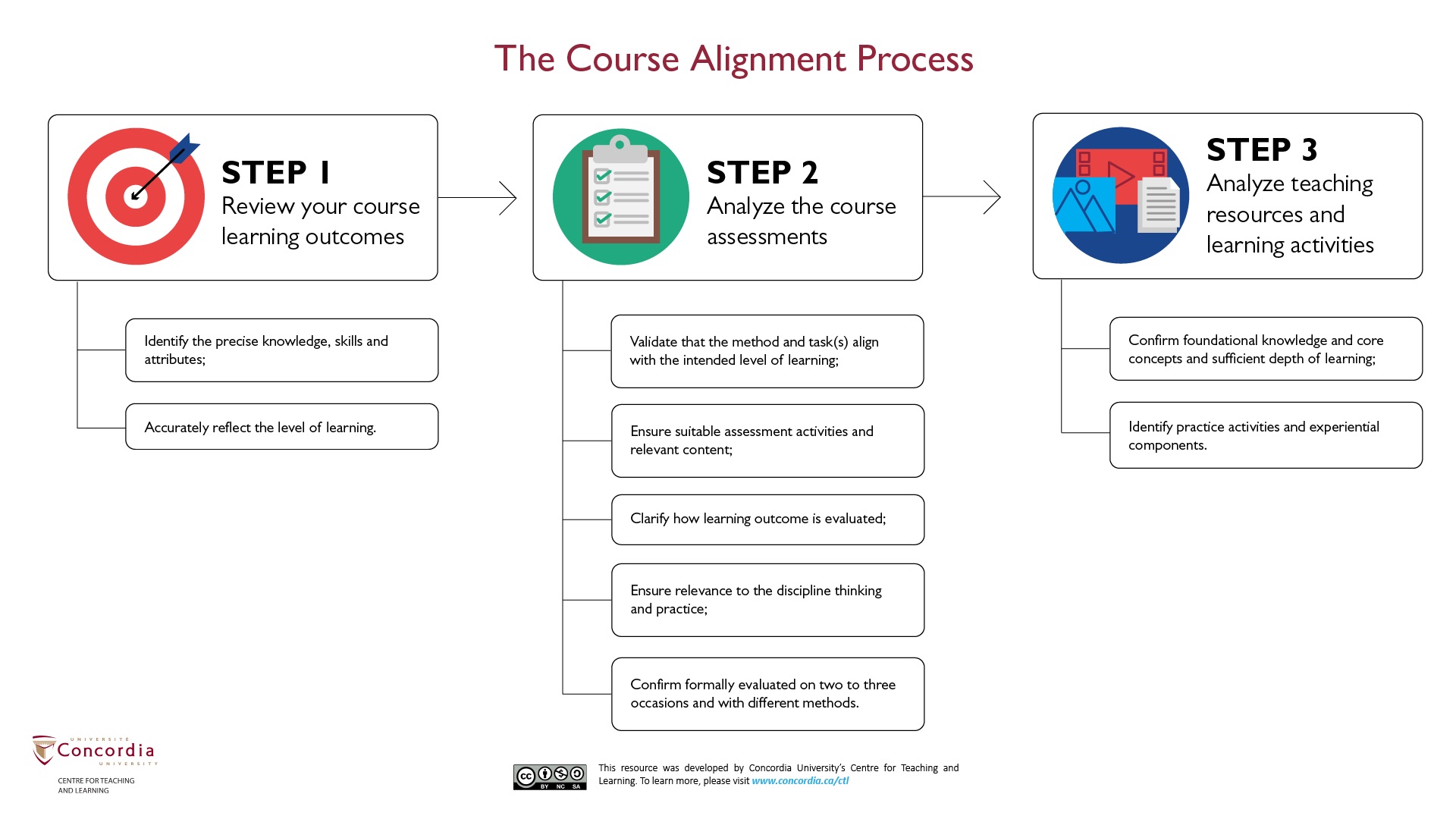Course alignment process
In brief
Creating and validating course alignments
Whether you are creating a new course or validating the alignment of an existing course, the process is the same.
The first step is to review your course learning outcomes. It is important to begin with student learning outcome statements that:
- identify the precise knowledge, skills and attributes; and
- accurately reflect the level of learning that is expected by the end of the course.
The second step is to analyze the course assessments to validate that the method and task(s) allow students to demonstrate the intended level of learning for each learning outcome. This part of the exercise helps ensure you have chosen the most suitable assessment activities and relevant content to evaluate student learning of a specific outcome and clarifies how each learning outcome is evaluated. Your assessment tasks should reflect not only the level of learning you intend for your students at the time of assessment in your course, but also be relevant to the discipline thinking and practice. Evidence-based standards indicate that each learning outcome should be formally evaluated on two to three occasions and with different methods over a semester.
Once the assessments are aligned with the learning outcomes, the next step is to analyze the teaching resources and learning activities to validate that they reflect the course assessment methods. This part of the exercise is useful for confirming that all the relevant foundational knowledge and core concepts are sufficiently addressed to build students to the depth of learning that is expected. It also helps identify opportunities for practice activities and experiential components (i.e., simulations, reflection activities, supporting tasks, interactive quizzes or videos, etc.) that will help students meet the demands of the assessments. This part of the alignment exercise can also be used to identify key lecture topics for planning lessons.

Once your learning outcomes, assessments and teaching materials are aligned, you are ready to plan the details of your course (i.e., schedule, lessons, etc.).
The CTL Course Alignment Template is designed to guide you through the alignment exercise. Download the template to help you determine that your course components are aligned and highlight areas that may need adjustment. If you have questions about any part of the work as a Concordia University faculty member, please contact the Centre for Teaching and Learning.

